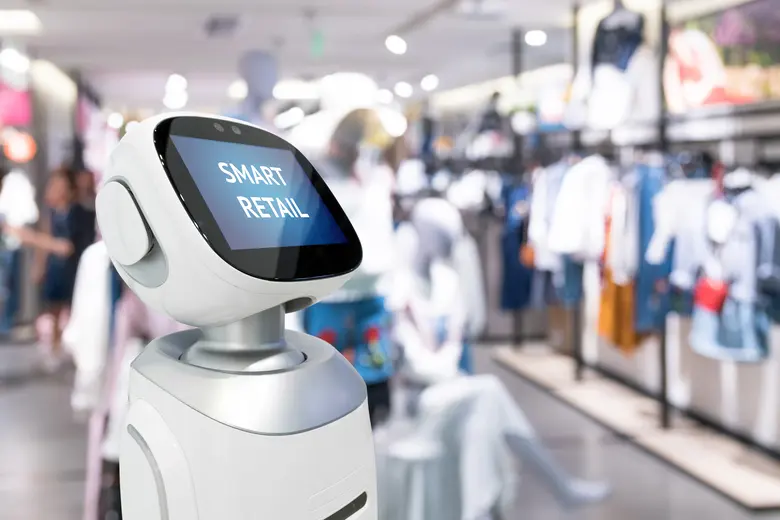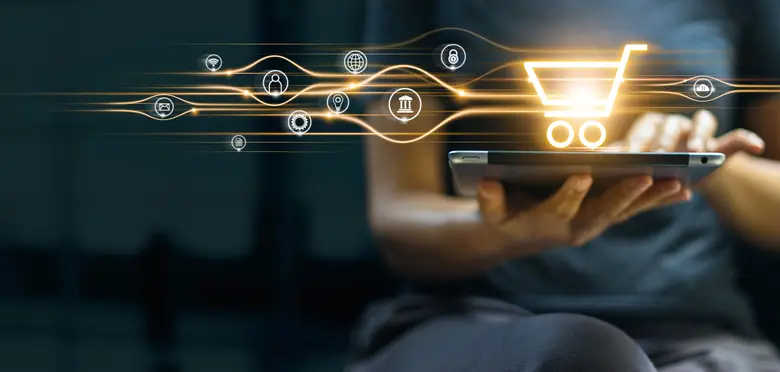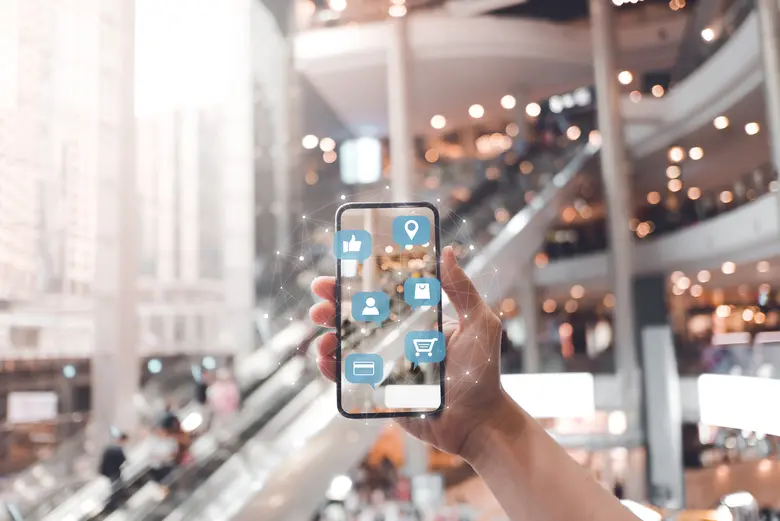Retail is changing: welcome to a future of qualitative and multichannel sales
The most successful stores in the coming years will be capable of turning each purchase into a rewarding experience. To do this, they must develop increasingly personalised and qualitative sales strategies and make innovative use of technology.

Table of contents:
Atanet stresses that 2022 in Spain has so far been a year of "gradual return to face-to-face purchases, to frequent visits to physical stores after a long period of limited social mobility and, therefore, of generalisation of telematic purchases". "Visits to shopping centres have increased by 35.6% compared to 2021, but remain more than 20% below pre-pandemic levels."
This new situation brings a great opportunity: "Consumers want to recapture some of the experiences that have been lost in recent years, and walking into a store is one of them". However, they no longer conceive face-to-face purchase as the default option. If they resort to it, they do it because they expect it to become "a satisfactory experience", and receiving routine, negligent or little empathic service can make them, today more than ever, not go back to a certain establishment. Under the current circumstances, "the trust contract with the customer is renewed with each new interaction, and retailers should be very aware of that".
The fertile coexistence between the physical and the digital

An unlimited succession of first times
From the passive (and captive) consumer to the act of buying understood as an experience. In the opinion of most experts, this has been the profound transformation experienced by the retail sector in recent years. A background swell that the pandemic has helped to accelerate but was already very noticeable before the mass lockdowns in the spring of 2020.
Fernando Parramón, head of Consumption at the consulting firm Deloitte, says that "we are facing a true paradigm shift in consumer expectations and in the role they play in the purchasing process". Until just a few years ago, buyers submitted with little reluctance to the seller's logic, assuming that buying was largely a routine and somewhat banal act. They compared features and prices, but ultimately ended up buying what was on sale from a certain assumed passivity.
Today, they have become "active subjects" demanding "authenticity, novelty, convenience, and creativity". They no longer only care about what they buy, but also who and, above all,how it is sold. Maybe they buy a little less, but they tend to buy a lot better. Not compulsively, but rather with firm criteria and clear expectations, fine-tuning the aim to be sure of hitting the bullseye.
Brand image in the age of multichannel shopping

Not all retailers have been able to optimally adapt to this profound transformation of habits and attitudes. According to Parramón, "the most innovative retailers are beginning to accept that technology is not just an "add-on". It has become "an essential part of any shopping experience". A factor that can have a decisive role in "designing these experiences" thus increasing the degree of consumer loyalty towards brands.
In practice, this means that artificial intelligence, robotics and virtual reality have landed in stores. And not as anecdotal supplements, but as a substantial ingredient. Technology sells because it gives companies that use it creatively a competitive, innovative, modern brand image. And these are values that the new wave of customers want to associate with their consumer acts, which are also opportunities to develop and exhibit their own personal brand.
David Atanet, Market Intelligence Manager at Prosegur, points to very similar conclusions. Atanet speaks of a sector shaken by such intense winds that the only certainty is uncertainty "and the only constant is change". Against this environment of extreme volatility, "the companies that show the greatest creativity and the greatest capacity for adaptation will manage to survive the heavy screening that is already beginning to take place".
2022 in Spain has so far been a year of "gradual return to face-to-face purchases, to frequent visits to physical stores after a long period of limited social mobility and, therefore, of generalisation of telematic purchases".
What does it mean to create a satisfying shopping experience? This is not empty rhetoric. The act of going to a physical store should be satisfying in and of itself, regardless of what you end up buying. To achieve this, "we must take more and more care of aspects such as the aesthetics and atmosphere of the establishment, its design, the way the product is presented, the staff's style of interaction, the use of surprising and innovative technological resources, music, etc."
Each visit of a specific customer must be conceived as "a succession of first times" so that the magic is not lost. Stores with an original and dynamic approach, that do not fall into routine and keep their capacity for surprise intact, have the best chance of surviving and growing in a changing environment. Another aspect that customers value more and more is, in the words of Atanet, "the possibility of making appointments to receive personalised service". Once again, optimal time management (your own and that of others) comes into play as a factor that makes the difference.
This is quite a challenge for a sector subject to growing tensions. As Atanet says, "customer expectations of personalised service must be made compatible with the growing lack of qualified personnel". The recruitment of good professionals is now a key area that not all retail businesses are managing to address successfully.
"A good salesperson is on the way to becoming a scarce commodity", explains Atanet, "and that is causing a rise in wages and job expectations on the part of these workers that many employers are not capable of assuming". Surveys show that European consumers assign particular value to the friendliness and professionalism of the shop assistants with whom they interact (for 44% it is one of the main ingredients of a satisfactory interaction), as well as their degree of knowledge of the product (43%) and their ability to offer sales solutions from the first contact (52%).
That is to say, as Atanet summarises, "time plays an essential value here: the consumer doesn't want to lose theirs, but expects the staff to spend as much time as necessary". The key consists, in the opinion of the Prosegur trend analyst, "in freeing shop assistants from repetitive tasks that add little value so that they can act, above all, as active sales advisors". A role that must be assumed "with empathy and without aggressiveness, but with efficiency".

Atanet also mentions the need to integrate digital and physical sales management. "Customers aspire to be able to buy your product through a personalised and qualitative interaction in a space that is comfortable for them, but that is not why they are going to give up online shopping." Multichannel use is another important challenge in the medium term. "Digital and physical stores must be harmoniously integrated into a coherent sales strategy, which does not prioritise one to the detriment of the other." It is also highly recommended to "offer a consistent shopping experience regardless of the channel chosen by the buyer". Beyond the product, the sales style is, increasingly, one of the main elements in the construction of a retailer's brand image.
Finally, Atanet highlights that "the new purchase combinations have brought new types of fraud". The main type, judging primarily by data collected in the United States, is fraud in multichannel purchase processes, with online transactions and store pickup, which has gone from 18.8% in 2020 to 38.9% in 2022. This new type of crime "is due to poor integration of the different platforms, which makes it possible for new breaches to appear". New realities, in short, that put to the test the ability to read reality and the strategic thinking of retailers who aspire to be competitive.
.webp)

.webp)
.jpg)
.webp)
